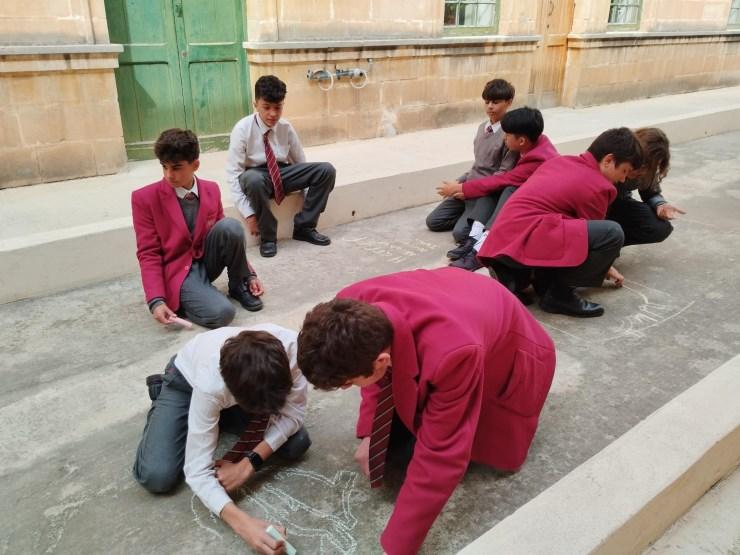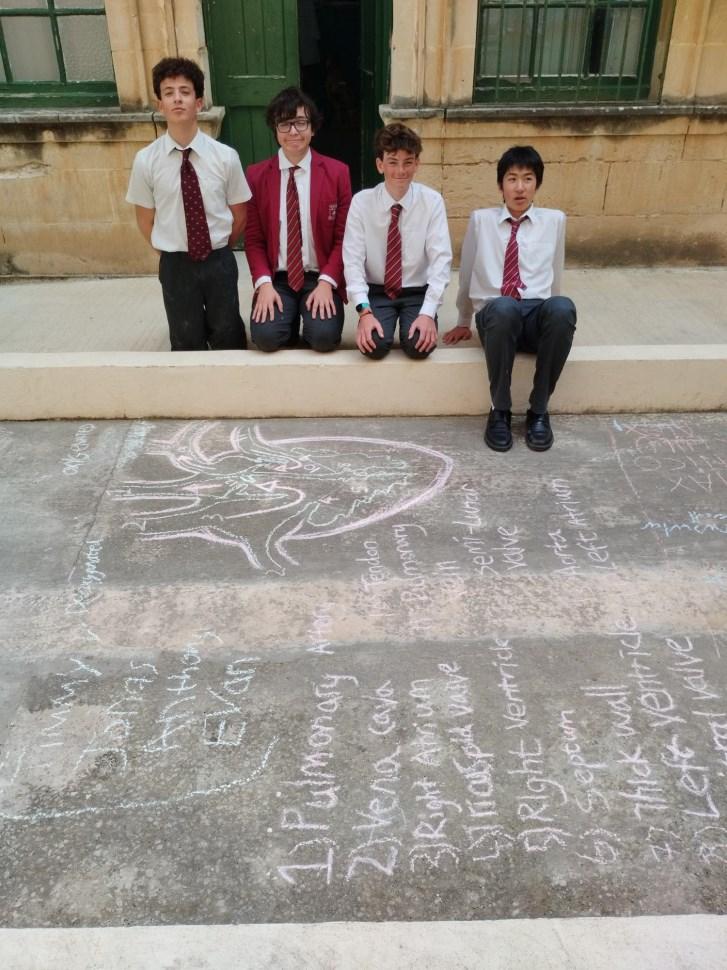
tices while concurrently fulfilling the requirements of their Master’s in Educational Leadership and Management studies at the University of Malta.
While at College, seven short individual interviews were conducted with influential school personnel. Observation sessions were conducted during the morning assembly of different sections within the college, board group meetings, one-to-one meetings, IEP and some lessons. The school routines and procedures were observed by being present on the school premises for the duration of the study-visit. This strategic approach is grounded in the belief that an immersive experience withina senior management teamcanprovide insights into effective leadership and instructional strategies. Being directly on the field, observing daily routines are valuable in getting information and insight of how some aspects are handled while interacting with everybody

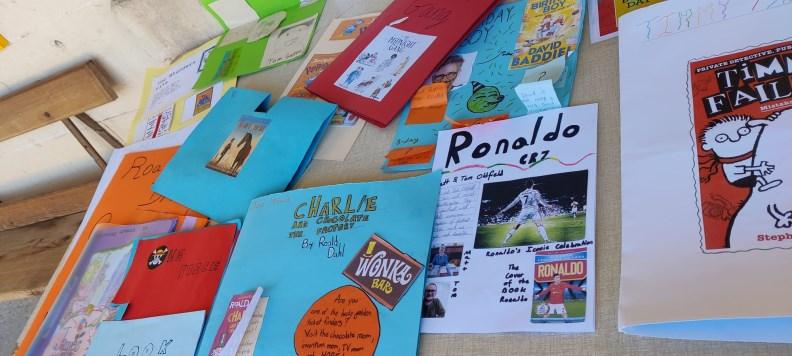


ContinuesonPg2


doing their everyday tasks. This provides rich and authentic understanding of the cultural behaviour and the importance posed by the context. This exposure certainly helped thesetwodedicated educators in comparing the theory learnt at University with what really happens in practice (Creswell& Creswell, 2018; Kemp, 2001; Mulhall, 2003).
As Danielson (2007) highlights, peer observation plays a pivotal role in the improvement of teaching practices. In the context of their shadowing experience, Ms Giordmaina Zammit and Mr Caruana Smith align with Danielson's assertion that peer observation facilitates reflective practice, contributing to a culture of continuous improvement, which is already evident at College. Reflecting, engaging, evaluating, and debating upon issues observed was a great opportunity for both educators not only to learn on a personal level but also to learn from each other. Comparing observation notes helped in challenging each other’s findings and developing observational and analytical observation skills providing a richer understanding of the area under study (Kawulich, 2005; Kennedy, 2013).
Hord and Tobia's study on professional learning communities (PLCs) (2012) further supports the collaborative nature of the educators' decision to conduct their research within the Junior school at St Edward’s College. Their findings underscore the importance of building professional learning communities and fostering teacher growth. The importance of a shared culture of learning, where educators can exchange ideas and strategies is also brought forth. By immersing themselves in the senior management team's daily activities, both educators have harnessed the power of collaborative learning, and integrated it intotheir ownprofessionalarsenal.
Joyce and Showers' research on peer coaching and observation (2002) provides additional validation for the duo's initiative. Their study highlights the effectiveness of peer coaching as a potent tool for improving teaching practices and student outcomes. Ms Giordmaina Zammit and Mr Caruana Smith’s decision to shadow the senior management team aligns with Joyce and Showers' findings, as they actively seek to observe and learn from experienced leaders in the field, and while on task.
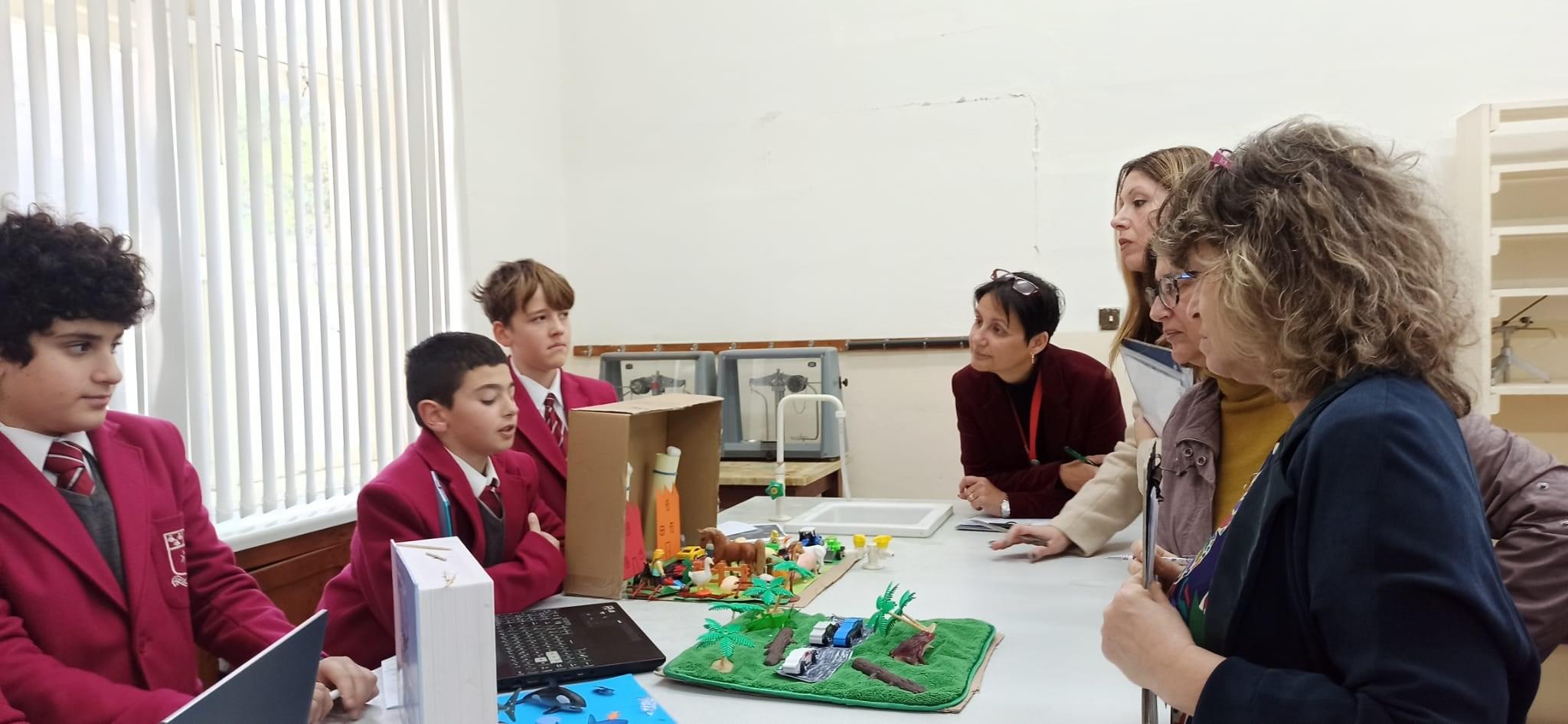
In their quest of investigating communication and decision-making, findings supported the theory as there is a close link between communication and making decisions. Robbins & Judge (2013) argue that the ultimate function of communication is to facilitate decision-making thus improving one would effectively improve the other. Griffin and Moorhead (2014) state that, “communication is essential to decision-making process. Information is needed to define problems, generate and evaluate alternatives, implement decisions, and control and analyse results obtained. Finally, communication expresses feelings and emotions. Organizational communicationis far from merely a collectionof facts and figures”.
There is no doubt that Ms Giordmaina Zammit and Mr Caruana Smith will be applying and sharing the lessons learned from their experience in their careers as leaders. Surely these educators won’t forget how welcome all the staff made them feel and truly appreciate how helpful every member of College is.
References:
• Creswell, J. W., & Creswell, J. D. (2018). Research Design: Qualitative, Quantitative, and Mixed Methods Approaches (5thed.). Sage Publications, Inc.
• Danielson, C. (2007). Enhancing professional practice: A framework for teaching. ASCD.
• Griffin, R. W. & Moorhead, G. (2014) Organizational Behavior Managing People and Organizations. SouthWestern: Cengage.
• Hord, S. M., & Tobia, E. M. (2012). Professional learning communities: Communities of continuous inquiry and improvement. In A. Hargreaves & M. G. Fullan (Eds.), Professional capital: Transforming teaching inevery school(pp. 159-182). TeachersCollege Press.
• Joyce, B., & Showers, B. (2002). Student achievement throughstaff development. ASCD.
• Kawulich, B. B. (2005). Participant Observation as a Data Collection Method. Forum: Qualitative socialresearch. 6:2. 43
• Kemp, E. (2001) Observing practice as participant observation - linking theory to practice, SocialWork Education, 20:5, 527-538, DOI: 10.1080/02615470120072823
• Kennedy C. Participant observations as a research tool in a practice based profession. Nurse Researcher (through 2013). 1999;7(1):56. https://ejournals.um.edu.mt/login?url=https:// www.proquest.com/scholarly-journals/participant-observations-as-research-tool/ docview/200770931/se-2.
• Mulhall, A. (2003), In the field: notes on observation in qualitative research. Journal of Advanced Nursing, 41: 306-313. https://doi-org.ejournals.um.edu.mt/10.1046/j.1365-2648.2003.02514.x
• Robbins, S. P. & Judge, T. A. (2013). OrganizationalBehavior. 17 ed. England: Pearson.
A day at Majjistral Park



During the mid-term holidays the boarders had the opportunity tovisit one of the most beautiful sites onthe island, MajjistralNature and History Park inMellieha. The perfect sunny day witha touchof Mediterraneanbreeze provided the perfect setting for the activity. The boarders went for a lovely hike the cliffs and thenfor a much -needed rest onthe beach for some VitaminD. the beachand because let's be honest nomatter how old we get once onthe beach and sand is ready available, we willallfind ourselves building a sandcastle, the boarders were noexception. Afterwards they were
ByIreneAttard



A Day to remember
During the last week of November 2023, Iremember having anearworm. For those unfamiliar withthe term, an earwormis that snippet of a song that keeps looping in your brain untilyouare thoroughly sick of it. Inmy case, Ikept hearing “Icanfeelit coming in the air tonight…hold on”. As the winter chillwas setting in, not thoughts of hygge or Netflix and chillwere onmy mind as this earwormlooped on. Rather, ominous thoughts of workloads to come. It was time toget started onthe Careers Fair.

Thenwe had a brainwave. Because, youknow, anearwormis not enough.

We decided tounify the Careers fair and the Science fair and declare the day anOpenDay for anyone topop inand see how the College operates ona day-to-day basis. I was excited…bit of a challenge Ithought.
Sothe prep work started. Emails were sent out toallcompanies onour mailing list. More companies were contacted and added. The philosophy behind this event is that aside from ‘staples’ suchas accountancy, law etc, the boys are exposed toother possibilities for career paths. Tothis end, we try toexpand our horizons as muchas possible with interests as varied as geology, astrophysics, medicine, law, maritime affairs, public service law enforcement, environmentalplanning and theoreticalphysics. This year we had 40 exhibitors and 51 speakers. The boys were givena timetable and had tomanage their time, plantheir day and find a balance betweenattending at least 5 lectures and their duties at the Science Fair and the OpenDay. This, initself, is training inef-


fective time management, a concept of great importance ina world where increasingly, every minute counts.
Meanwhile, work onthe Science Fair was underway. Iwillnot be saying muchabout that as my colleagues have writtena piece inthis publication. Onmy part, however, Ialways look forward togreeting Diego, the Lab Skeleton.
Using social media topromote the event, particularly the tours for the OpenDay, proved tobe a great success as bookings for the tours started pouring in. We had 7 tours intotaland all of these were heavily subscribed. Mr JolenGalea assisted by giving directions where people were doubtfulwhere they had togo. The tours were coordinated by Ms Irene Attard withher posse of IB Students. Ms VivianBorg was holding the fort at the Gazebowithanswers toany queries about admissions that prospective parentsmight have. And ask they did, as they watched the students and pupils fromJunior School and Early Years make fulluse of the facilities withinthe college. It is indeed a joy to see the harmonious operations of teachers and pupils as they bothtravel the road tomore learning.


Meanwhile, inthe Hall, the stands put up by the exhibitors were very wellattended. The boys were inquisitive and acquisitive (they really like merchandise!). Theexhibitors had words of praise for our students, particularly for the logical and criticalapproach tothe questions they placed as wellas the genuine interest shown. Allthe exhibitors requested toparticipate againnext year and after the fair was over, the college alsoreceived emails from prospectiveexhibitors.
For those whowanted a little bit of warmth, the Canteenremained openallday, providing all
withhot beverages, snacks and food. Their work was supplemented by various entrepreneurialactivities undertakenby the students. Fromsweet delights toraise money for the SchoolCouncilto Jamand Marmalade from fruit grownat College, from handmade jewelry toergonomic cushions for JAYE, our students showed a flair for sales and innovation. Once inside the canteen, one could appreciate twoexhibitions whichwere ondisplay. One exhibitionwas set up by the older students and was meant tobe a fundraiser for their end-of-schooldo. This was a WatchExhibitionentitled Timeless Pieces. Some of the boys are collectors of timepieces and their knowledge of the watches they displayed was remarkable. Another exhibitionwas by a group of Scale Modelers led by anOld EdwardianPeter Calleja. Thesemodels are amazing in the detailthey portray and are excellent tools for the practicaldemonstration of historical realities such as war tanks, planes etc.
Across fromthe canteen, the students whoare specializing in IT, led by Ms Erika Camilleridelved intothe world of robotics. They demonstrated their impressive abilities throughthe robot they built themselves. The look of intent and fierce concentrationontheir faces as they operated this robot was a sight tobehold.

As the afternoonwore onand the adjudicationof the Science projects neared completion, The TunefulTrio regaled the gathering crowd withsongs culminating inthe iconic The Big Bang Theory theme Song…ending their repertoire withabang. The prizes for the projects were announced but, intruth, somuchhard work was put into the projects by allconcerned that everyonewas a winner.
The day slowly drew toa close and the curtains were drawnona very successfulevent. Of course, eachevent brings withit its ownset of lessons, this one being noexception. These willbe takenonboard sothat next year we canpromise anevenbetter trioof activities.


Trying their hand at traditional dishes
Living away fromhome is never easy but one of the most challenging aspects is getting used toa different cuisine. We allmiss those traditionaldishes that our loved ones cook for us. Especially when we are away fromhome for a long period of time. Nothing will replace family meals and traditional home cooking but we encourage our boarders tostart new traditions and todevelop skills that willcome in handy in life whenthey willbe living ontheir own.
Twoof our boarders took advantage of this relatively quiet period after their exams and various academic commitments and spent some of their free time inthe kitchentogether withour resident chefs. They decided tocook Pelmeni, whichare traditionalRussian dumplings. They decided toshare a taste of their traditionalcuisine withallthe boarders and the staff. Under the guidance and assistance of Chef Shaunand Chef Mark they prepared over twohundred Pelmenifor everyone totry.
We hope tohave the opportunity to try as many traditional dishes as possible inthe coming months!
 ByIreneAttard
ByIreneAttard



Reflecting on Maltese History and Literature a day at Fort St Elmo
ByKimberlyPsaila fortheDepartmentofMaltese
Recently, the Maltese department organizeda poignant outing toFort St Elmoin Valletta for the students inYr 8. It offered the students avivid insight intoMalta's experience during World War II. This educationalexcursionnot only deepened their understanding of the island's wartime struggles but alsoprovided a tangible connectionto the themes exploredin George A. Said Zammit's prose book, "Emilia."
As we stepped foot intothe historic fort, the significance of our visit begantounfold. Divided intothree groups, eachstudent had the opportunity toengage withvarious aspects of the outing, ensuring a comprehensive and enriching experience for all.
The tour itself proved tobe a captivating journey throughtime. Led by knowledgeable guides, students explored the fortifications, encountered authentic weapons used during World War II, admired vintage aircraft, and examined military uniforms. Witheachartifact and exhibit, the narrative of Malta's wartime resilience came tolife, leaving a profound impact onthe young minds present.
Meanwhile, the art sessionoffered a creativeoutlet for students toexpress their reflections onMalta's wartime history. Against the backdrop of Valletta's skyline and the Churchof St Publius in Floriana—bothsignificant sites heavily affected by bombardment during the war students were tasked withcapturing the atmosphere of the era. Armed withchalk, they meticulously recreated scenes of destructionand resilience, evoking the sights and sounds of World War II. The exercise not only honed their artistic skills but alsofostered empathy and understanding for the hardships endured by Maltese citizens during those
tumultuous times.
Inparallel, the digitizationsegment provided a moderntwist tothe explorationof history. Students engaged inactivities aimed at preserving and documenting Malta's heritage digitally, ensuring that future generations could continue tolearnfromthe past. Fromscanning documents todigitizing photographs, this hands-onexperience underscored the importance of preserving collective memory and historicalrecords for posterity.

Throughout the day, a palpable sense of camaraderie and shared learning prevailed among the students. Discussions flowed freely, witheachindividualdrawing connections betweentheir experiences at Fort St Elmoand the narrative presented in"Emilia."The outing served not only as aneducational endeavour but alsoas a platformfor personalreflectionand growth.















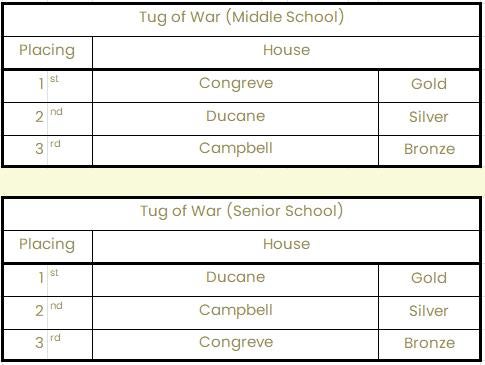













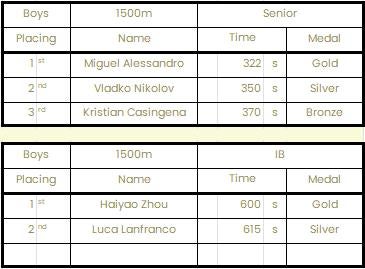








Murder, they wrote learning science through forensics
BySamanthaAbelaIna groundbreaking initiative, the Middle Schoolstudents are embarking on a journey intothe captivating realmof forensic science. Spearheaded by the visionary Ms. Stephanie Wilkinson and a teamof dedicated teachers, this innovative project promises tocaptivate the minds of Year 7-8 students as they delve into the intricacies of forensic techniques. The project, set tounfold over the course of several weeks, willsee students immersing themselves infour key forensic disciplines:
• Blood Splattering and Analysis,
• Finger Printing,
• Handwriting Analysis, and
• Fiber Analysis.

Through hands-onlearning experiences and expert guidance, students will unravelthe mysteries behind these crucialinvestigative tools.

The project kicked off witha riveting scenariothat left students onthe edge of their seats. Onthe 23rd of February, during the Friday Activities slot, the entire schoolwas drawnintoa gripping simulationas the body of a victim, Charlotte Bennett, was discovered inthe science lab. Portrayedby the talented Ms. Annette Agius, the victim's discovery sparked a flurry of activity as the drama unfolded. The actualpresence of the Malta Police Force, for whose kind collaborationthe College is most grateful, added a touchof reality tothe proceedings, further heightening the drama and excitement.
Under the watchfuleye of the "police"and "medicalexaminer," portrayed by the Headmaster and Ms. Zarkova respectively, students were granted access tothe crime scene togather
evidence and document their findings. With a sense of responsibility and professionalism, students meticulously combed throughthe scene, noting crucialdetails and potentialclues. Following their investigation, students convened inthe Chapelwhere they were introduced tothe overarching project by Ms. Wilkinson. Dr. Morgan, portrayed by Ms. Zarkova, provided valuable insights intothe forensic techniques they would soon be learning, setting the stage for anexhilarating journey of discovery.
Inthe weeks that followed, students were treated toanenlightening talk by the realCSIs of Malta, courtesy of the Malta Forensic Laboratories. Led by Chief Inspector Charlot Casha, students gained firsthand knowledge fromprofessionals inthe field, further enriching their understanding of forensic science.
As the project progresses, students willrotate throughvarious workshops to master eachforensic technique, paving the way for a comprehensive understanding of investigative processes. Weekly updates willdocument the unfolding investigation, fromuncovering motives toidentifying suspects, culminating in a thrilling mock trialslated for May.
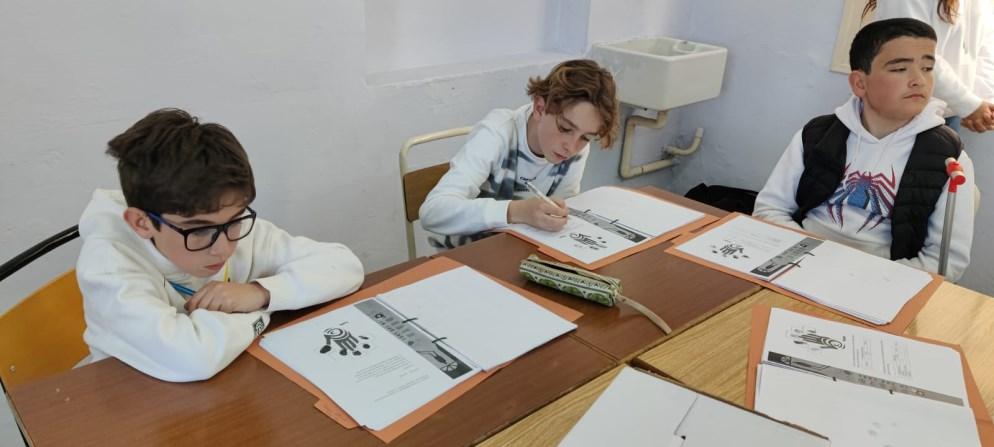


Throughthis immersive project, students arenot only acquiring valuable skills incriticalthinking and problem-solving but also cultivating a deeper appreciationfor the intricate world of forensic science. As they embark onthis thrilling journey of discovery, the Middle Schoolstudents are poised to leave anindelible mark onthe field of investigation and justice.







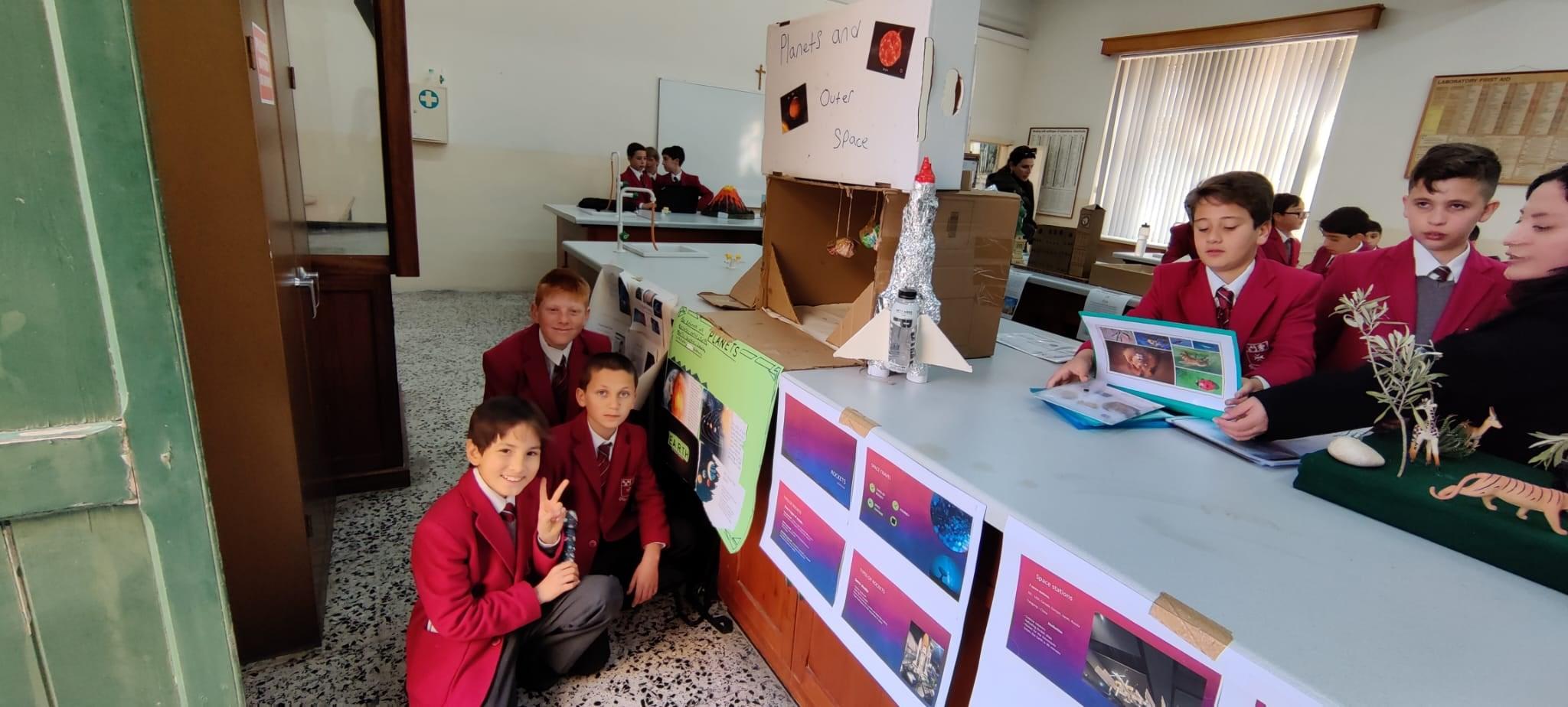

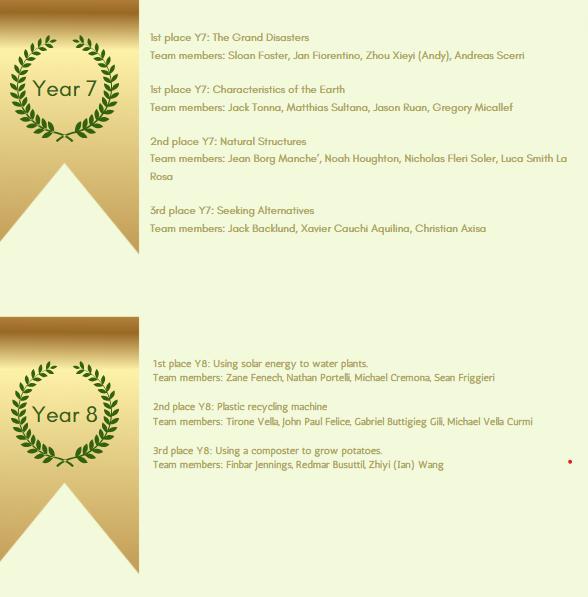



 ByStephanieWilkinson
ByStephanieWilkinson
